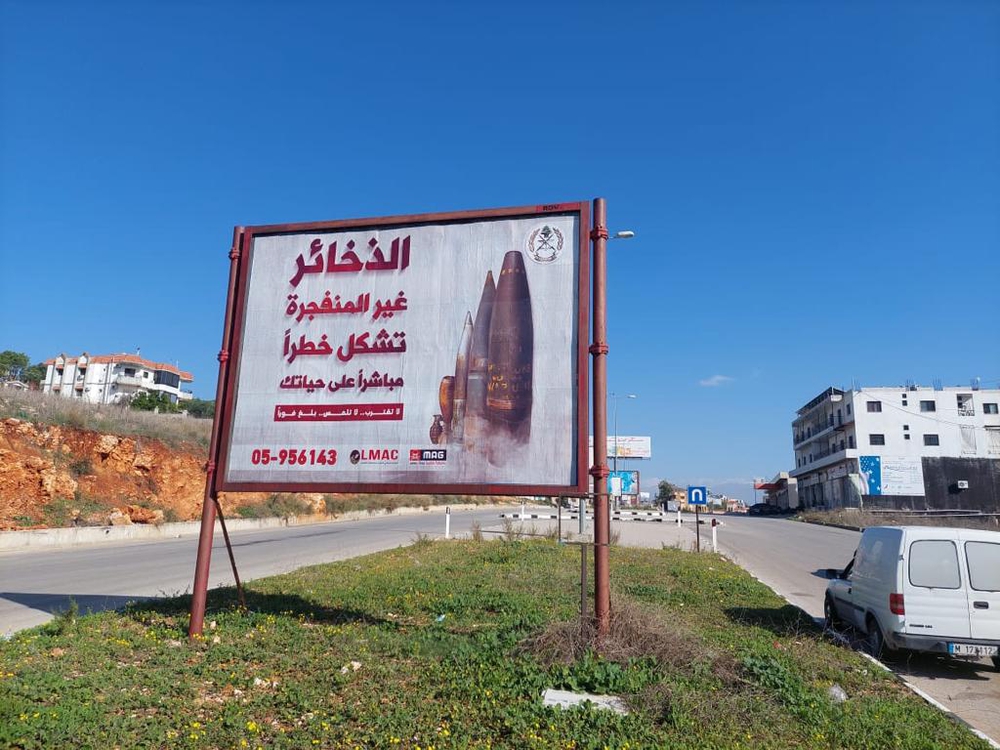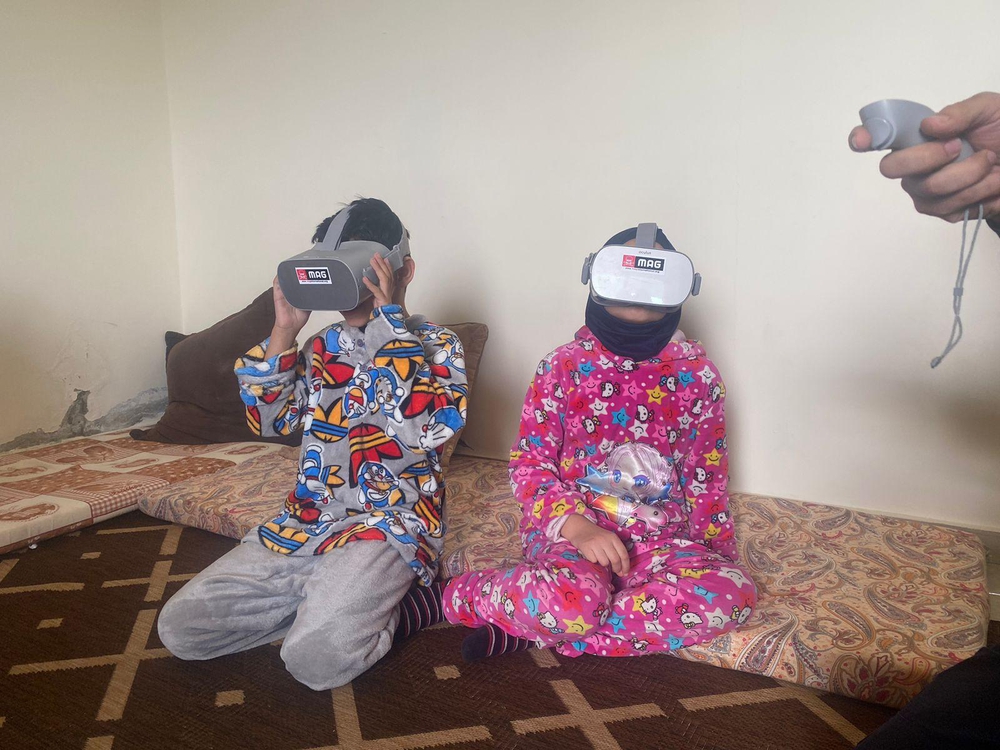Following the outbreak of hostilities on 7 October, tensions have escalated between Hezbollah and Israeli forces along the Blue Line – a demarcation line that was drawn by the United Nations in 2000 and stretches 120km between Lebanon and Israel.
The hostilities have severely affected Lebanon economically, socially, and environmentally and the scale of devastation is stark.
As of 2024, more than 80,000 people living in more than 90 villages on the Lebanese southern border, including MAG staff and their families, have been forcibly displaced, further intensifying the need to clear land.
After decades of civil and external conflict, Lebanon has suffered from the deadly legacy of war. After Israel withdrew from Lebanon in 2000, more than 400,000 landmines littered the Blue Line.
MAG has been clearing the area since 2017 and has made more than one million square metres of land safe for communities to use productively for agriculture and infrastructure and removed over 55,000 explosive remnants of war. The recent bombing, however, has devastatingly stunted progress.
Villages and their surrounding land have been ravaged by white phosphorus bombs, a toxic substance that burns at temperatures high enough to melt metal. As well as severely injuring humans and livestock, it is known to have a long-lasting impact on the local environment, polluting crops, water streams, and nearby fisheries.
Agriculture is the primary livelihood for communities in the south. During the recent aggression, many have lost their land during the harvest season, exacerbating the economic crisis and already high levels of food insecurity.
In response to hostilities on the Blue Line, MAG has focused its efforts on explosive ordnance risk education. Teams have delivered around 404 in-person awareness sessions to over 3,644 displaced people since October, stressing the risks of unexploded ordnance.
With the need for humanitarian aid growing exponentially, MAG has also developed a Digital Explosive Risk Education campaign via social media, sharing Community Preparedness and Prevention messages about avoiding burns from white phosphorus bombs, and how to help ease children’s anxieties. The campaign has reached more than two million people across Facebook, Instagram, X (formerly Twitter), YouTube, and TikTok.
Social media not only enables MAG to reach audiences of all ages but allows us to update and disseminate safety messages in a rapidly changing environment.
In addition, MAG has also installed 100 billboards on the main roads leading to southern Lebanon, in coordination with national authorities, highlighting key messages on how to identify and report unexploded ordnance in newly contaminated areas.
Along with the billboards, thousands of flyers emphasising MAG’s safety advice have been distributed at strategic locations on roads leading to the south.

New approaches are crucial to reaching as many people as we can, especially in challenging settings. In recent months, MAG has been using virtual reality to engage with younger members of the community. Cartoon simulations and animated scenarios for children and adults have been used to communicate practical safety messages to at-risk communities.
The immersive technology transforms traditional learning spaces into dynamic, interactive experiences where people can engage with the content, leading to improved understanding and retention of information.

MAG Lebanon Programme Manager Hiba Ghandour says: “MAG has been working in Lebanon since 2001, and on the Blue Line since 2017. We don’t want to lose the progress that we and other humanitarian organisations have made over all these years. That’s why we are trying to do everything we can to inform people living with the deadly threat of explosive weapons and help save lives in Lebanon.”
MAG will continue to strengthen its emergency response to the escalation in hostilities on the Blue Line and reiterate its steadfast commitment to providing critical safety messages to communities in need.
See more about our risk education work in the video below.





